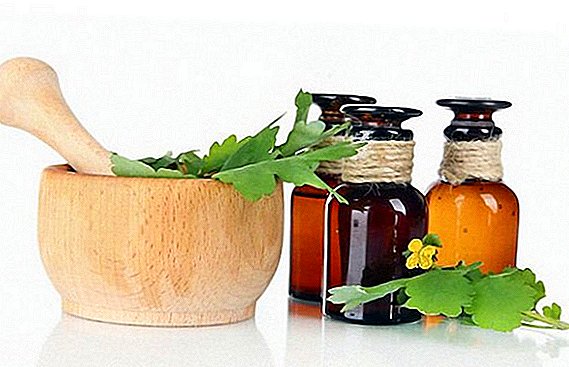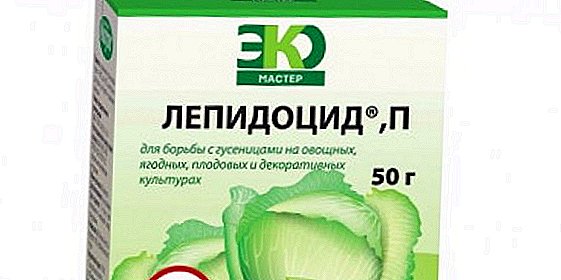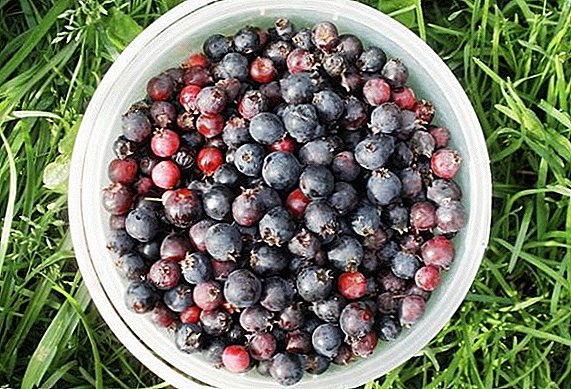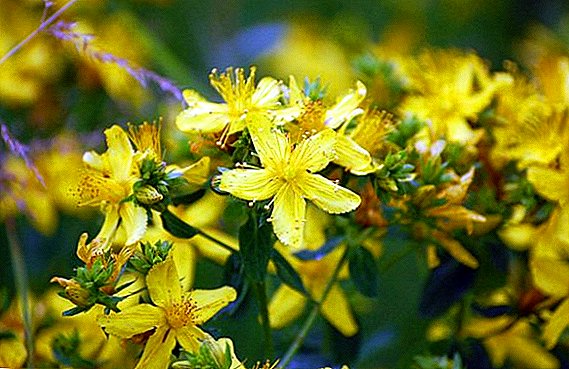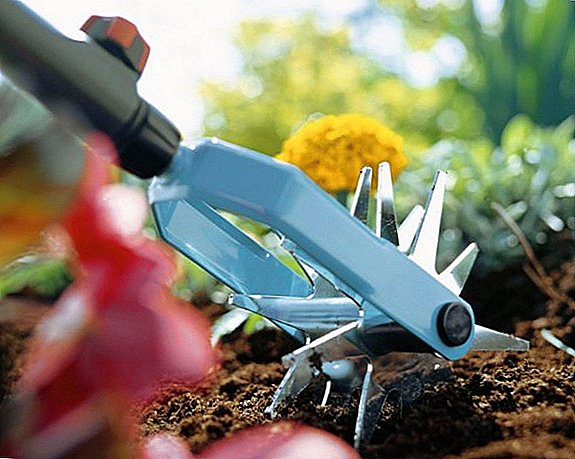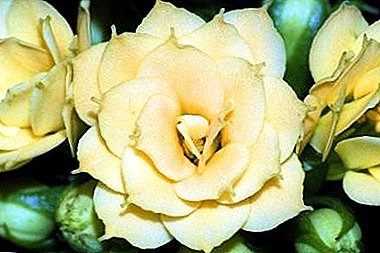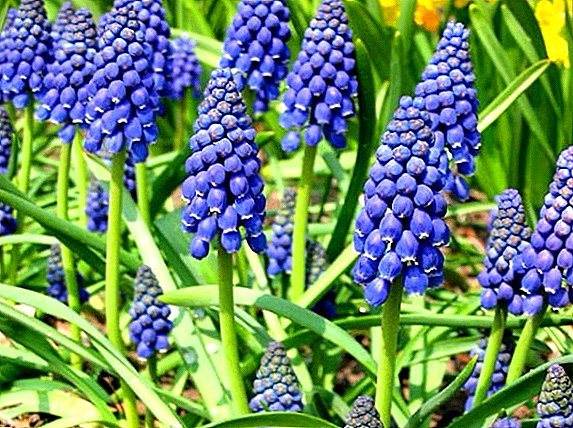 Muscari (Eubotrys, Botryanthus) - bulbous perennial plant, popularly known as "viper onion" and "mouse hyacinth". Under natural conditions, it grows in the mountains and forest edges of the Crimea and the Caucasus, the Mediterranean region, in southern and central Europe, and Asia Minor. The plant has become particularly popular due to the early flowering periods of muscari, compared with other spring flowers. For this reason, the flowers of mouse hyacinth are the subject of this hunt and massively cut off under the first bouquets.
Muscari (Eubotrys, Botryanthus) - bulbous perennial plant, popularly known as "viper onion" and "mouse hyacinth". Under natural conditions, it grows in the mountains and forest edges of the Crimea and the Caucasus, the Mediterranean region, in southern and central Europe, and Asia Minor. The plant has become particularly popular due to the early flowering periods of muscari, compared with other spring flowers. For this reason, the flowers of mouse hyacinth are the subject of this hunt and massively cut off under the first bouquets.
Muscari flowers, delicate and at the same time very fragrant, are widely used as a garden plant in decorating lawns and garden paths.
Until recently, muscari flower was attributed to the family of liliaceae (hyacinths), later the plant was classified as asparagus (asparagus).
Did you know? The plant is obliged by its name to the British botanist, the Scotsman Philip Miller, who decided that the plant has the smell of musk. The flower was called "Viper" or "snake" onion because the spring around these flowers people noticed a large accumulation of vipers, because of which it was mistakenly thought that snakes feed on muscari leaves. In fact, snakes just crawl out to bask in the sun, and muscari grows in natural conditions in well-lit and heated outdoor places. The plant “mouse” or “grape” hyacinth was nicknamed due to its similarity with this flower, small size and inflorescence in the form of a bunch of grapes.
 Muscari has egg-shaped bulbs, covered outside with light scales. The leaves are quite long, up to 6 pieces, usually spring up in spring, but sometimes reappear after summer. Muscari flowers are collected in inflorescences up to 8 cm long, the fruit is a box, seeds of black color, small and wrinkled.
Muscari has egg-shaped bulbs, covered outside with light scales. The leaves are quite long, up to 6 pieces, usually spring up in spring, but sometimes reappear after summer. Muscari flowers are collected in inflorescences up to 8 cm long, the fruit is a box, seeds of black color, small and wrinkled.
The plant has many varieties, almost all of them are unpretentious and have decorative qualities, but most often they grow as a garden plant. Muscari Armenian, or Colchis - it is the most frost-resistant, the flower appears in late spring, the flowering period is three weeks.
Did you know? Muscari is associated with an ornamental plant, but some of its varieties have quite practical application: from muscari they produce emulsions for the development of photographs, foaming substances included in the composition of shampoos for hair and some drinks, in addition, it is used in medicine as a component of diuretic and stimulating drugs, and even in the mining industry.
Choosing a place to plant Muscari
Cultivation of muscari in the garden does not involve much difficulty with the choice of location. The plant can be located even under garden trees, because viper onions are blooming in the very early spring, when the leaves are not yet decorated, therefore their shadow is small. On the other hand, Muscari, like other spring flowers, needs a lot of sunny color, so this plant should not be planted under conifers and other evergreens. Besides, muscari should be protected from strong gusts of wind.  Muscari can be planted directly on the lawn, in the spring it will greatly refresh the appearance of the lawn. However, in this case it is impossible to cut the grass until the muscari leaves are completely dead, otherwise the plants' bulbs first become shallow and then completely stop forming. When choosing a site for planting, it is better to allocate a plot for the plant that allows it to be planted in a heap, with mass flowering this creates a very beautiful bright color spot against the background of green grass.
Muscari can be planted directly on the lawn, in the spring it will greatly refresh the appearance of the lawn. However, in this case it is impossible to cut the grass until the muscari leaves are completely dead, otherwise the plants' bulbs first become shallow and then completely stop forming. When choosing a site for planting, it is better to allocate a plot for the plant that allows it to be planted in a heap, with mass flowering this creates a very beautiful bright color spot against the background of green grass.
Important! With all its unpretentiousness and successful flowering, even in a few shaded places, muscari does not tolerate overmoistened soil, so preference should be given to elevated parts of the garden.
Muscari - perennial plants. In order not to accidentally damage the bulbs, do not plant them near the places reserved for the annual planting of other flowers. Good companions for muscari are daffodils, crocuses, hyacinths, tulips and other spring bulbous flowers.
Soil requirements
 Muscari grows well on fertile and loose soils with good water permeability.
Muscari grows well on fertile and loose soils with good water permeability.
In general, these plants do not place high demands on the composition of the soil and can feel quite comfortable everywhere. However, the most active, long-lasting and beautiful flowering of muscari can be achieved by planting it in a light or medium soil with a pH level of 5.8 to 6.5. It is advisable to feed the soil before planting with organic fertilizers - for example, with humus or compost. Fertile and suitable for Muscari soil - a pledge not only long and vigorous flowering, but also the formation of larger bulbs.
Everything about planting transplanting and breeding muscari
Muscari can be grown in two ways - seed and vegetative. Taking into account that the daughter bulbs this plant forms in large quantities, the second method of reproduction of muscari is used much more often.
Sometimes muscari is also grown by planting seedlings purchased in the nursery. Already blooming mouse hyacinths buy in pots in the middle of spring and immediately transplanted into the open ground.
Growing Muskari Seeds
Most species of viper onions very easily propagate by self-sowing, which in garden conditions is a disadvantage rather than a dignity of a plant, since it leads to the uncontrolled growth of fairly small plants. In order to avoid this problem immediately after flowering in Muscari, flower stalks should be cut. For reproduction of muskari seeds to leave until full maturity, you need exactly as many boxes as you need for later use.
 Muscari seeds should be planted immediately after collection, in the same autumn, as the next year, as a rule, they lose germination. The sowing depth is 1-2 cm. The following spring, the seeds sprout in the form of fine small plants, but the formation of the bulb lasts a long time, and therefore muskari planted from seeds begin to bloom no earlier than the second year, and more often only the third.
Muscari seeds should be planted immediately after collection, in the same autumn, as the next year, as a rule, they lose germination. The sowing depth is 1-2 cm. The following spring, the seeds sprout in the form of fine small plants, but the formation of the bulb lasts a long time, and therefore muskari planted from seeds begin to bloom no earlier than the second year, and more often only the third.
Vegetative breeding methods Muscari
Vegetative reproduction of muscari is a method of transplanting young bulbs formed on the parent. Separating such babies is pretty easy. If the bulb is too small, it is planted for rearing on a razvodochnogo garden bed, all other bulbs can be planted immediately to a permanent place.
Muscari - small flowers, they are planted on the growing moon in late August or early September. Regarding the possibility of planting or transplanting an adder onion in the spring, it is worth saying that in general it should not be done. The exception is the situation with muskarians in flower pots faded after the spring holidays. To the plant did not die, it can be carefully removed from the pot, separate the bulb and plant in open ground for rest. By the fall, such a bulb can be dug out and used next year for growing in a pot.  Bulbs of Muscari dug out of the ground should be planted immediately. If the bulbs are purchased in a store, before planting, they should be well inspected and discarded from infected, diseased or rotten bulbs: only healthy material should be planted.
Bulbs of Muscari dug out of the ground should be planted immediately. If the bulbs are purchased in a store, before planting, they should be well inspected and discarded from infected, diseased or rotten bulbs: only healthy material should be planted.
Muscari bulbs are planted not in a separate, but in a common, not very deep hole (three times deeper than the height of the bulbs). For the formation of a decorative flower bed, it is recommended to plant several different bulbous plants in one hole - for example, muscari, daffodils, crocuses, etc. It looks very nice, but when planting it should be borne in mind that different bulbs need different depth. Therefore, the landing is carried out in the form of a puff pie: the bulbs of larger flowers (such as daffodils) are laid out deeper, then they are sprinkled with earth, the muscari bulbs are laid on top, etc.
The muscari bulbs planted in autumn are already in bloom next spring.
How to care for the Muscari plant
Since muscari perfectly feels like a wild flower in various parts of the world, grooming it is not just not a difficult process, but it may not be implemented at all: the mouse hyacinth is quite able to withstand the winter, bloom and reproduce itself without much support. But, as in the case of any plant, attentiveness and care makes the plant more beautiful, healthier and more enduring.
Watering muscari
 Muscari needs an abundance of moisture in the period of active growth and flowering. However, since this is an early spring, the land at this time is not too dry, because the plant is completely contained in the soil after the melting of snow and rain. It is worth watering muscari at this time only if winter was snowless and spring is windy and not rainy.
Muscari needs an abundance of moisture in the period of active growth and flowering. However, since this is an early spring, the land at this time is not too dry, because the plant is completely contained in the soil after the melting of snow and rain. It is worth watering muscari at this time only if winter was snowless and spring is windy and not rainy.
Important! If water stagnates in the ground, the muscari bulbs can rot.
Two weeks after flowering muscari can be watered gradually reduced, and after the leaves are completely yellow and wilted, it stops completely, because during the rest period the plant practically does not need moisture.
Thinning Muscari
Being a perennial flower, in several seasons, Muscari creates thick, fragrant thickets. In order for the plant to develop better and not interfere with its neighbors, such families need to be thinned every three years. This procedure is combined with the planting of young bulbs in new places, so it should be carried out from August to September.
 Muscari tolerates transplanting immediately after and even during flowering, but in this case, the bulb must be dug with a good supply of land, so as not to damage and not bare the bulb and roots.
Muscari tolerates transplanting immediately after and even during flowering, but in this case, the bulb must be dug with a good supply of land, so as not to damage and not bare the bulb and roots.
Fertilizer and plant nutrition
The low fertile soil for muscari should be fed organic. If you do this every fall at the same time as digging the area, the mouse hyacinth can be grown in one place for up to ten years, while the usual period after which it is time to transplant the muskari bulb is five years.
Important! It is not recommended to use fertilizers of animal origin (fresh manure, chicken manure, etc.) for muscari. Their use contributes to the decay of the bulbs and the development of diseases.
After flowering, cutting the stalks, the soil should be fertilized with liquid potassium-phosphorus compounds. In the autumn, if the plant has not reached the age for transplantation, the site should be cleaned of yellowed leaves, and then mulched with peat for the winter. In addition to proper irrigation and fertilizer, caring for muscari also requires loosening and weeding, since weeds can adversely affect the process of bulb formation.
Storage of muscari bulbs
 As it has been said, the muscari dug onion is usually planted in a new place right away. However, there are cases when it is necessary to save the dug bulbs until the next season. In order for the bulb to be suitable for planting after storage, it is necessary to choose healthy and as large as possible (at least 1 cm in diameter) specimens.
As it has been said, the muscari dug onion is usually planted in a new place right away. However, there are cases when it is necessary to save the dug bulbs until the next season. In order for the bulb to be suitable for planting after storage, it is necessary to choose healthy and as large as possible (at least 1 cm in diameter) specimens.
Dug out bulbs should be sorted by size and washed, then treated with antifungal agent. For these purposes, any fungicide (solution of potassium permanganate, Bordeaux liquid, Fitosporin, etc.) will be suitable. Bulbs purchased at the store do not need to be processed; it is enough for them to ensure the storage conditions indicated on the package.
Processed bulbs should be dried for 2-3 days at room temperature, then placed in a peat mixture or in moist clean sand;
Place the material prepared for storage in a dark, well-ventilated place with stable temperature (17 - 18 ° С) and humidity (about 70%).
Throughout the period of storage, it is necessary to regularly inspect the onions for the presence of spoiled or rotted. Such copies are subject to immediate removal.
It should be noted once again that muscari is rarely left for the storage of bulbs, since the best time to plant is autumn, and it is in the fall that the bulbs of aged plants are being dug up.
Diseases and pests and their prevention
 The main enemy of Muscari is the onion yellow dwarfism virus, which causes a plant disease such as mosaic. It infects the leaves, shortens the floral arrow and as a result slows the growth of the viper onions. Muscari also suffers from the usual cucumber mosaic, which also deforms the leaves.
The main enemy of Muscari is the onion yellow dwarfism virus, which causes a plant disease such as mosaic. It infects the leaves, shortens the floral arrow and as a result slows the growth of the viper onions. Muscari also suffers from the usual cucumber mosaic, which also deforms the leaves.
The carrier of both of these diseases is aphid, so preventive measures should be aimed primarily at combating this pest. A good method is the solution of any soap product, which is sprayed affected areas aphids.
Plants infected with a mosaic cannot be treated, they should be immediately dug out and destroyed without pity, since the disease can easily spread to neighboring plants.
Another serious pest for muscari is spider mite To fight it effectively with the preparations "Fitoverm", "Acrofit" and "Vertimek".
Finally, muscari is the favorite delicacy of rodents, above all, field mice. To protect the flower bed from this scourge, you can use the replanting of plants, the smell of which rodents do not tolerate. This may be regular garlic or imperial grouse (the latter looks quite attractive, so it will completely complement the flowerbed). Thorny plants can also scare off mice, for example, wild rose.
In general, the care of Muscari presents no particular difficulty. It is so easy to grow that any beginner can handle this task. And if over time the plant began to lose its appearance and quality of flowers, it means that it is simply time to replant it.


